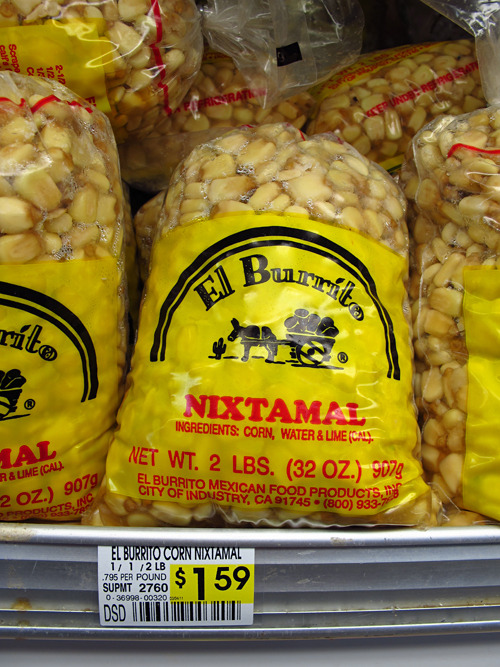Today, pellagra “has vanished” even in Southeast Asia, where malnutrition is exceptionally high¹. While outbreaks continue to threaten refugee populations deprived of niacin--one began in Kuito, Angola in 1999 and was predicted among Rwandan refugees in 1995 ^2, these outbreaks hardly compare to the epidemics that affected tens of thousands to over a hundred thousand of the poor a year in 19th century northern Italy and the early 20th century southern United States ^3,4,5.
The diet that created these epidemics was one of degerminated, non-nixtamalized corn and little else. Though corn formed a large component of many indigenous Americans' diets, they lived in agroecosystems with access to game, legumes, and other foods ^6. Similarly, the poorest of U.S. Southerners, living far from railroads, grew their own vegetables and suffered lower rates of pellagra than prevailed in towns surrounded by cotton plantations ^7. And pellagra in Italy followed modernization of agriculture, creating proletariat farm workers who grew corn for their own consumption and everything else for sale ^8.
Differences in corn processing between indigenous and epidemic-affected societies exacerbated the problems of poor diet. Native Americans used limewater and other alkaline substances in preparing corn in a process known as nixtamalization, which increases nutrient availability in corn.
Degerminating corn further reduces its nutritional value. Bollet traces the introduction of corn milling technology in the U.S. that involves degermination to the very beginning of the 20th century, preceding the epidemic of a disease that was not endemic to the U.S. previously ^9. This also explains the difference between pellagra rates in cotton-textile towns supplies by rail with corn ground where the new milling process was introduced on the one hand, and more rural areas where corn was stone-ground locally with germ on ^10. Traditional knowledge had something to say about this as well: according to Bollet, stone-ground corn retains a reputation for good health in the South ^11.
 |
| A traditional water-powered mill |
All three of these causes involved a lessening of the intertwining of people's lives and the production of food they ate. Cash crop monocultures and proletarization meant that most of the agricultural products people were growing were not for their own consumption--or the consumption of people in their own socioeconomic class and geographic region. The loss of nixtamalization when corn was passed from indigenous societies to European and Euro-American cultures reflected a change in the cultural position of corn, from sacred and long agriculturally-central to a crop that was eaten "formed into bread so revolting that the very pigs recoil from it," as one 19th century commentator put it ^12. Pellagra outbreaks followed times when other crops became less available, either shortly before harvest or when other crops failed or increased in price ^13, 14. This reflected the low status of corn (surely justified by the association with pellagra), which was usually only favored by the poor when other choices were absent. The lack of reverence for corn production allowed Midwestern milling technologies to create degerminated corn for shipment to far-away populations who, divorced from the production of their own dietary staple, were unable to insist upon milling the whole kernel.
Although poverty was the overarching cause of the pellagra epidemics and many other health crises, in this case at least the problem was one of a certain kind of poverty, poverty in the context of societies in the middle of advancing agriculture and agricultural processing along the lines of monoculture and mass production without much caution for side-effects.
1. Sanjay Kumar, "Southeast Asia's Burden of Nutritional Disorders," The Lancet 355 (2000): 52. Accessed at http://www.lexisnexis.com.ezproxy.westminstercollege.edu/lnacui2api/api/version1/getDocCui?lni=3Y8V-1180-00CP-4359&csi=154080&hl=t&hv=t&hnsd=f&hns=t&hgn=t&oc=00240&perma=true
2. Sophie Baquet et al, "Pellagra Outbreak in Kuito, Angola," The Lancet 355 (2000): 1829-1830. Accessed February 20, 2012 http://www.lexisnexis.com.ezproxy.westminstercollege.edu/lnacui2api/api/version1/getDocCui?lni=40B1-PRT
3. James Jackson Jarves, "Italy and Her Dark Side: A Frightful Scourge Poverty Has Caused
There," The New York Times, June 19, 1881. Accessed at http://query.nytimes.com/mem/archive-free/pdf?res=9B05EEDE103CEE3ABC4152DFB066838A699FDE
4. Massimo Livi-Bacci, "Fertility, Nutrition, and Pellagra: Italy during the Vital Revolution." The Journal of Interdisciplinary History 16, no. 3 (1986): 446. Accessed at http://www.jstor.org/stable/204498
5. Alfred J. Bollet, Plagues and Poxes: The Impact of Human History on Epidemic Disease. (New York: Demos Medical Publishing: 2004.), 158.
6. Ibid., 168.
7. Ibid., 168.
8. Livi-Bacci, 441.
9. Bollet, 169.
10. Ibid., 169.
11. Ibid., 169.
12. "Article 5 -- No Title," The New York Times, May 12, 1881. Accessed at http://query.nytimes.com/mem/archive-free/pdf?res=9900EEDA133CEE3ABC4A52DFB366838A699FDE
13. Bollet, 156.
14. Livi-Bacci, 441.
1. Sanjay Kumar, "Southeast Asia's Burden of Nutritional Disorders," The Lancet 355 (2000): 52. Accessed at http://www.lexisnexis.com.ezproxy.westminstercollege.edu/lnacui2api/api/version1/getDocCui?lni=3Y8V-1180-00CP-4359&csi=154080&hl=t&hv=t&hnsd=f&hns=t&hgn=t&oc=00240&perma=true
2. Sophie Baquet et al, "Pellagra Outbreak in Kuito, Angola," The Lancet 355 (2000): 1829-1830. Accessed February 20, 2012 http://www.lexisnexis.com.ezproxy.westminstercollege.edu/lnacui2api/api/version1/getDocCui?lni=40B1-PRT
3. James Jackson Jarves, "Italy and Her Dark Side: A Frightful Scourge Poverty Has Caused
There," The New York Times, June 19, 1881. Accessed at http://query.nytimes.com/mem/archive-free/pdf?res=9B05EEDE103CEE3ABC4152DFB066838A699FDE
4. Massimo Livi-Bacci, "Fertility, Nutrition, and Pellagra: Italy during the Vital Revolution." The Journal of Interdisciplinary History 16, no. 3 (1986): 446. Accessed at http://www.jstor.org/stable/204498
5. Alfred J. Bollet, Plagues and Poxes: The Impact of Human History on Epidemic Disease. (New York: Demos Medical Publishing: 2004.), 158.
6. Ibid., 168.
7. Ibid., 168.
8. Livi-Bacci, 441.
9. Bollet, 169.
10. Ibid., 169.
11. Ibid., 169.
12. "Article 5 -- No Title," The New York Times, May 12, 1881. Accessed at http://query.nytimes.com/mem/archive-free/pdf?res=9900EEDA133CEE3ABC4A52DFB366838A699FDE
13. Bollet, 156.
14. Livi-Bacci, 441.

No comments:
Post a Comment